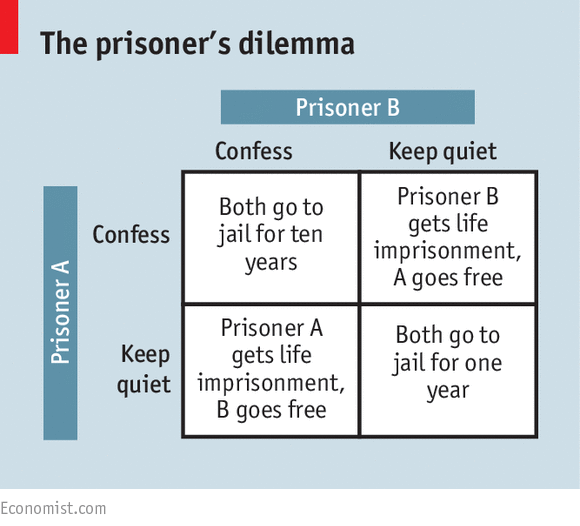孤獨
原作者:Thomas Jeffries Betts 出版日期:1917年1月
譯者:李耀宗(紐約) Yawtsong Lee (New York)
隨著1913年冬天的尾巴,亨利.巴爾多抵達了遼山—他有個高大粗壯的身子,脆挺的鬍子從下頜撐出,那頭黑髮似乎巴不得從他的前額上卷。他頭頂上蓋著一頂飽經風霜的哔叽遊艇帽, 衣襟的鈕扣孔墜著一條紅色絲帶,他行走時總偏好他的左腳。巴爾多是個自豪的男人,而且他很開心,因為他的夢延伸進了大白天:半個世界以外是諾曼底的卡朗唐,而在卡朗唐有個歐德,比麵包還香的歐德,在等他攢足與她嫁妝等額的聘金和她到東方的船票錢。而在西貢呆了那些年後,他的難得的機會終於來到了;他的兵團從西貢上船啟程回國把他留下,那些年還在他踝骨留下一枚槍子兒—那時不是邊境有事兒嗎—還留下胸前這枚因那枚子彈而賺得的綬帶。
四星期後河上的結冰因春暖而融冰,他的船終於回到他身邊。她是艘矮胖的貨船,兩舷有一道道锈痕,還有腰上寫著大大的中國字“大肚子”。在細高的煙囪上環著三圈彩色,紅,白和藍,對於他,巴爾多,而言—當然除了歐德之外—她,”大肚子”,是世上最美的了。
他密鑼緊鼓地往這艘船因之得名的大腹便便的船艙塞進褐色的豆餅,然後就讓她再次出海,她的發動機哐啷哐啷地,像一個疲憊的打鐵匠的榔頭,響著,沿著海岸往一千英里外的上海駛去。三星期後她又回到他身邊,下一次也是隔三星期回來一次。每當她回來時,巴爾多那段碼頭的長長一溜碎石灘頭上就會洶湧著半裸的,銅色上身的苦力將豆子運進裝貨口。巴爾多看著這一切,他碼頭上的熱鬧喧嘩,像個成熟婦人的 “大肚子” —特別是每次他的船來之後他淨賺的五十墨西哥元,他是開心得很的。值得,他思忖著,真的很值得。比起西貢,他在這兒攢的聘金增加得更快,在這兒他也不懷念(西貢的)卡提納街,雅克,皮埃爾和保羅;不是完全不想,是不那麼思念啦。
過一會兒他又發現他還是想念他們的,所有的。在那兒,晚上是很舒服的,坐在“陌生人”咖啡館前,頭上棕櫚樹搖曳簌簌,面前白色桌上擺著餐前酒一杯,等他啜飲。可不是,那時多愜意啊,跟這裡的俱樂部很不一樣。巴爾多對這裡的俱樂部不敢恭維。俱樂部裡那些人說的,想的,喝的,跟卡提納街上不可同日而語啊。而且那俱樂部還特貴。所有他不欣賞那兒,也不再去那兒。他寧願孤獨—不錯,孤獨一個人。
而當他嘗試著吞下孤獨的苦果時,他想到一個辦法。這是個五月的傍晚,“大肚子”已經慵懶地沿江而下了,他發現尤里烏斯.棱特洛夫在向他,巴爾多,的買辦憤憤抱怨為何幾包德國毯子沒運到,他一面說著,一面在買辦不為所動的鼻子底下不斷晃動著貨物的提單。棱特洛夫個子很高,人很瘦,動作快捷突兀,像鳥一般,在他窄長,鳥一般的鼻子下,長期居留著淡淡的一道八字鬍鬚。巴爾多知道他是鄰居,這個德國人住在離他住所不到五十碼的地方。他忙不迭地表示遺憾並承諾補償,說的當然是那一溜海岸的商業界通用語言,英語。毯子準是不知擱在哪兒了。找到之前,如有什麼暫時的不便,或者毯子真的沒如約運到,他,巴爾多,法華貨船公司代表,會給予賠償,他先在此表達同情和遺憾了。那麼他們可以回家了吧。
棱特洛夫凝視著他。然後,氣消了,並且有些驚訝地說:
“那些人,你在俱樂部的那些朋友,和他們夫人—他們不喜歡看到你跟我在一起。”他聲音裡沒有一絲懊惱。語氣就像在講述貿易統計數字。
“那些老爺們—哼,”巴爾多回答,然後他們一起走出事務所。他們一路話不多,因彼此的真誠而有些尷尬,他們離開碼頭一直來到棱特洛夫家門口停下來。這房子是用本地的褐土平原的粘土建造的,窗戶外包著亮麗的紅色百葉遮門。棱特洛夫駐足,以喉音清了清喉嚨。
“你—你願意進來吃點東西嗎?”他遲疑了一會兒終於說出。
“好啊!”巴爾多忙應道,他心裡想到自己那靜無人聲的家,那陳舊煙草的臭味,以及那一望無際的一間又一間的房間。他熱衷地重複:“當然好啊!”
他們在棱特洛夫的院子裡用餐,在鋪有一塵不染的白桌布的小圓桌上面對面地坐著。當暮色逐漸暈染天空時,他們身邊的藤蔓就綻放了潔白的月光花,它的芬芳蓋過了短矮的檉柳發出的刺鼻味。附近磚窯的池塘裡,青蛙的怨歌變成了搖籃曲。兩人好整以暇地,美美地吃著,慢條斯理的一口口間,他們談話的音量在增加,但中間還是有著靜靜品嚐的時段。一個女人伺候著,她的頭髮緊緊纏在頭飾上方,短襖與藤蔓摩擦出簌簌聲。
起先巴爾多對於不是由男僕而是一位女子伺候用餐感到驚訝。不過,他思忖,這還是可以理解的。這就是為什麼棱特洛夫,他覺得,警告他,跟他為伍會在社交圈遭到怎樣的排擠。然後他又開始在心中琢磨。這個如此安詳寧靜,言語得體的人到底是什麼樣的人?為什麼他從來不提他老家巴伐利亞?他經常流利地引述並為他,亨利.巴爾多,翻譯成英文的歌德和蘇德爾曼,他又尊歌德又尊蘇德爾曼,要作何解釋呢?他的歌德,蘇德爾曼,他的赫伯特.斯賓塞和他的蕭伯納,又如何跟伺候他們的神色平靜的女子說到一塊兒呢?巴爾多呆呆地思忖著,逐漸地他感到他一定要跟這個說話慢條斯理,語音低沉洪亮的人成為永久的朋友,不管他人生的主調是什麼。他大口大口地把這種堅定的信念吸入身體,他覺得氣入丹田渾身舒暢。
這晚上的高潮是在用餐結束時。那女子一言不發站到棱特洛夫座椅右邊—等待著。德國人看了她一眼,起身,又猶豫片刻,然後親了她,嘴對嘴地親了她嘴唇。巴爾多立刻做了一個表示看不慣的動作,然後又恢復了東方的無言容忍。他熟知黃海沿岸事物的各種奇怪複雜因素,但從未看過或聽說本地女子被吻。終於,他抬起眼睛。棱特洛夫已回到座位坐下,女子已離去。
“那,”巴伐利亞人說,“那是個錯誤。”然後,他聲音裡既沒有自豪也沒有遺憾地繼續說話。“我跟你說了吧。我是八年前來這裡的。那時我年輕驕傲,並且—我老家有個對象。可是我並不喜歡這兒;我不了解這兒的人。我很孤獨,很想家,有鄉愁而又孑身一人。所以—我很愚蠢—我就找來這個女人。她叫櫻花。我犯了錯誤。我把她當作體面婦人。每晚,就像今晚,我都親她;我親她的嘴唇。後來我知道自己犯了錯誤。我又不能叫敏娜來團聚。如果她來了,這些港口的貴婦們不會拜會她的。她會很孤獨,而我知道她會受不了那種孤獨。” 他的聲音停頓,但就那麼一會兒。“同時我也不能讓櫻花走路—她已經習慣了過乾淨日子,習慣了每晚被我親嘴。她家人不會讓她回去的。更何況她現在已經跟家人變得陌生了。她回去會很孤獨。我能咋辦呢?” 他從英文改口為當地話: “沒法子。”
又一陣沉默,終於巴爾多凝重地表示同意: “的確,沒有解決之道。”然後他的思緒又回到自己身上。 “那你,你也感到孤獨嗎?”
“我也很孤獨,”德國人說。然後他解釋說: “不過所有人都是孤獨的,不是嗎?我們又不是別人養的畜生。如果要做自己的主人,就得孤獨。”他總結他的論點說: “沒法子。”
而巴爾多一面吸著他的馬尼拉煙草,一面吸入友誼的氛圍,點頭同意。
他很晚回到家,他高挺著頭,大口飲進夜晚的沁涼空氣,覺得一切才開始。的確如此。整個長夏,他幾乎每晚都在檉柳叢邊主要是聆聽棱特洛夫這個德國人以他深沉的低音對人,事, 時代發表堅信不移,但刀下留情的評論。漸漸他更認識了棱特洛夫本人,敏娜和櫻花,以及他的過去。他已學會忍受每晚親吻那位乾淨無語的中國婦人,頂多翻一翻眼表示他的靈魂的尷尬。巴爾多知道了棱特洛夫的信念,就是因為這些信念,他被逐出歐伯蘭特婁。“我是個理想主義者,” 巴伐利亞人說。“我是理想主義者,我無法接受服役。那時我還年輕,我當時覺得他們” —他一揮手囊括了眾多高階和知名人士— “我當時覺得他們是不對的。現在我覺得他們只是犯了錯誤。他們不了解。”即便對於巴爾多而言,巴爾多是心甘情願地服役,並且還在踝骨裡留了一顆槍子兒, 即便對於巴爾多而言,他逃避帝國的兵役也是情有可原的。
那的確是個美好的夏天,“大肚子”每三星期進港一次,並且每次留下五十元左右的淨收益,可以加到那必須攢到與歐德嫁妝等額的聘金裡。有一天巴爾多收到一份文件任命他為法國領事,於是他在大院的一根不起眼的旗桿上掛起了法國三色旗。終於,在七月,聘金攢足了,並兌換成法國黃金;巴爾多便展開最後的任務,就是要攢下一千五百法郎,約六百多元,供歐德搭船來東方與他團圓。在他事務所牆上大地圖上他把圖釘釘在馬賽的位置,當船票錢越攢越多時,那顆圖釘就沿著輪船通往上海的路線上往前挪。然後—然後天下大亂了。一聽到謠傳 他立馬去找棱特洛夫。
“是的,”德國人說,“是的,打仗了。這是一場可怕,艱苦的戰爭。”他頓了頓,接著若有所思地說: “是的,他們連我這種人都不嫌棄。我這兒有一份文件。他們可以對我逃兵的往事既往不咎—他們說我是逃兵—如果我立刻去青島報到他們就赦免我。”
巴爾多沉默片刻,在考慮適當用詞。 “我雖感遺憾,”他終於說。 “但你這樣就可以在戰爭結束時回到敏—回到歐伯蘭特婁。這樣比較好。”
“我嗎?我不會去青島。”
“但是—你的國家呢?”
“我的國家犯了錯誤。他們錯了。他們不了解。這裡” —他指著自己的頭— “這裡告訴我,我不可以去。所以我會留在這裡。” 在他最後上揚的語調裡,不僅僅是德語常有的期待的聲調。
但是巴爾多不理會那尋求他的寬容和友誼的眼神;他目睹著心目中一個神的瓦解。在他的混沌中,他突然聽到一個像是自己的聲音。“我很遺憾。我可以尊敬我的國家的敵人。但我只能蔑視一個與自己國家為敵的人。我很遺憾。”然後他轉身離開了,不顧棱特洛夫凝視無限遠的眼神,與那籠罩他的悲傷做著征戰。
但他戰勝了悲傷。之後的三個月裡,遼山的日子只是“大肚子”的來來去去。每三星期她離港南行,她下腹的紅色高高呈現在水上,她的半裸的螺旋槳擊打著褐色的河水,她的保險箱機載承載著一千個南方苦力在滿洲地裡辛苦一個夏天後回山東老家的船資。這位法國人還給他們添一份勞累,每次船返港時便對船做一次大修,和貨物大搬移。畢竟巴爾多這船是寶貴的,君不知有多少針對法國船隻和法國的各種陰謀在醞釀嗎?他不是法國的代表嗎?最近不是有從北京派出的駱駝隊破壞了跨西伯利亞鐵路嗎?他能不防著所有這一切嗎?巴爾多很忙,非常忙,忙得沒有閒暇去想那個窗上有紅遮門的房子,直到十一月剛結冰時節,航道裡的浮標已被取出水面,而港口被正式宣布閉港。冬天降臨了。
這時巴爾多開始反思自己的情況,才意識到棱特洛夫在他生活裡留下了的空白。他漸漸感覺到了這空白,慢慢地在他心中有了一種不安和惶惑,而又因為自己那不敢表達的思念感到厭惡自己。這都怪棱特洛夫。為什麼怪人家,他不知道,也不敢追究。但毫無疑問是棱特洛夫讓他如此孤單的。他開始恨棱特洛夫,那是一種憂心忡忡的,不安的恨,他把這歸因於他的國籍,他的背信,他的軟弱,但就是不去怪罪巴爾多自己。但即使這樣恨他,他還是無法甩掉那個人對他的強烈吸引,這使他更加恨他。而他非常孤獨。
日復一日巴爾多坐到他的染有灰塵的小事務所—倉庫現在清空了,河上的冰日益增厚—他在桌上處理零星的事務。然後他就會不由得去看輪船海圖,代表歐德的圖釘如今就要到科倫坡了。自從閉港後,那圖釘便再也沒有移動過,在春天把“大肚子”帶回他這裡之前,圖釘還是不會移動的。然後,假借視察那些川流不息的,六根輪輻車輪,長毛小馬拖曳的運豆車,他的視線會投向窗外,但旋即盯住棱特洛夫窗子那紅色遮門和窗格。然後他會對自己這好奇要求天打雷劈—可是又會忍不住看一眼。
有一天,他正看著,突然發現紅色遮門是關嚴的。棱特洛夫多半是病了,他覺得,要么就是走了。或許他已經走了,去向他的君王盡忠,那麼巴爾多就有正當的理由恨他了。巴爾多拐彎抹角地向他的僕人們打聽。沒有,他們告訴他,德貿的主人沒有走。他傷到了,在臥床休養。他穿著鐵鞋在河冰上溜的時候崴了腳踝,還著涼了。而巴爾多就開罵了,從“呆子” —這字眼即使中國人也覺得有點冲—開始到所有能想到的罵人話都用上了,臭罵了苦力一番,才轉身離去。
可是他總去他的蒙著灰塵的事務所,因為那裡可以看到棱特洛夫的住所;那晚他也在那裡,一頁一頁地翻著一份已經翻爛的“巴黎生活”雜誌。漸漸他總會把眼光移向窗戶和窗外棱特洛夫的房子。然後他眼神愕然停住,因為有一扇窗—那些終日關嚴的窗戶之一—出現了一框黃光。他定睛再看,便覺得那黃光一直是在那兒的,八月以來就一直亮著,棱特洛夫專為他,巴爾多,亮著。第二天那房子還是同樣—所有窗戶都遮陽了—除了那扇發出黃光的窗。再過一天還是如此。之後的早晨德國人窗戶外的遮門都大開著—棱特洛夫康復了—但那晚又都關上了,除了那扇透出黃光的窗。現在,巴爾多深信不疑,是棱特洛夫在召喚他,因此就越發厭惡他;他告訴自己,不但要恨棱特洛夫的頑固,還要鄙夷他的軟弱。他以自己的孤獨鞭打自己,並對這種痛甘之如飴。
冬天漸漸接近尾聲。殘了腳踝的巴爾多被拴在家裡足不出戶,離棱特洛夫近在咫尺。他呆在那裡,白天看著紅邊的窗戶,晚上看著那一方黃光。他無法掙脫,黃光的召喚在他心中產生激烈抗拒。那德國人—幹嘛老杵在他,巴爾多,眼皮底下啊?他衷心期盼春天把“大肚子”帶來。
春天卻不著急著來,但終於有一天漲了潮,破了一直到碼頭邊的冰,浮冰在褐色水中洶湧打漩,河水顯示了威力把它們推到了海裡。冰去了,船就來了—吃水多多的高船。它們興奮地駛入,一路與冰塊碰撞著;靠了碼頭,成群的喧囂的苦力一擁而上,開始卸貨。其中一馬當先的,打著一面嶄新三色旗 的就是“大肚子”,她的貨艙裡,各種貨物之間有三包並不令人起疑的零裝貨,上面蓋著“三角X"的發貨單印記。
和該有事,亨利 巴爾多正站在踏板上(他不是法國領事嗎)嚴防任何對他的船和祖國的陰謀,偏偏就碰到了這三包裡的一個包裹。碰到時,他的外套被扯破了,於是他注意到扯破他外套那根鐵絲。任何鐵絲都不應該在零裝貨裡存在,更休說是可用來製作小電池的絕緣電線。法國人一下子警覺起來,就展開調查,旋即發現另兩個蓋了”三角X“ 記號的包裹,它們裡面都被巧妙地挖空,塞滿了油膩的,黃色包裝的條棒,上面蓋著戳記: "杜邦—炸藥。”
於是,當一名自稱叫阿凌夫的,話很多的本地人來領取三個包裹時,巴爾多便問了他一些問題。他很趕,這中國人說。那些包裹都是些樣品,明天要拿到長春去的,而他,小的,去長春之前還有很多事要做。長春,法國人琢磨,在去哈爾濱的路上,而哈爾濱在跨西伯利亞鐵路上,要是鐵路上一座橋給炸了—他把貨給了那人,然後一早晨發了三個電報—一份給上海法國領事,一份給長春的日本上校,一份給哈爾濱的俄國總指揮官。之後他回到“大肚子”並繼續監督裝貨。
“哼!”他嗤一聲,非常得意,“我們的鐵路,不會爆炸了!”之後的兩天裡他忙著裝貨,馬不停蹄地,直到塞滿船艙的豆餅使得“大肚子”的吃水線在稀薄的淡水裡壓到水下半英尺。然後他看著她轉了彎,得意地拉著喇叭,用前腳撥開碎冰,去征服海洋,他緩緩轉身,禁不住因勝利而得意洋洋。
這樣的事,得意一點並不為過吧。要是在國內,在戰場,或者他再年輕些,不要說這樣的事,再多的事也是份內之事。可是在這裡,他這把年紀,這肥胖的身子,加上腳踝裡還有個東京灣的槍子兒—
他們,俱樂部他們那些人,笑談著“我們的盟友,” 誇誇其談地講到喀爾巴阡山口之役,就彷彿是他們自己攻打了那些山口。罷了!他們哪一個做了什麼,全部都做了什麼是可以跟他做的這件事媲美的?倒不是這事會被大聲張揚,那是當然的,但是像他這把年紀,還跛腳—倒不是一定要讓他們知道。也許將來告訴他們;不是現在,連棱特洛夫都不要告訴,雖然他是最討厭霍亨索倫王朝的—可是怎麼老是轉到棱特洛夫那兒?他不禁望望窗戶。五十碼外夜裡德國人那窗戶一方黃光。巴爾多硬是把視線拉回自己屋子四壁之內。
第二天早晨他醒來時發現地面實實在在出了一身汗,終於擺脫了冬天的寒意。空氣中終於有了潮濕,終於樹木和房舍不再像是硬紙板剪裁出來的,杵在白藍色單調色調背景裡的物體。地平線柔和了,朦朧了;土地不再赤裸,平原的盡頭籠罩著薄薄的水霧,不可透視,卻誘惑人們去它後面探幽訪勝,細語著它隱藏的神秘。巴爾多大院外的道路上遲來的運豆板車開心地濺起泥濘行走,而之前由於路面結冰堅硬,那僵硬的泥巴在輪下破碎而包住輪子軸心。城市上空偶爾一群野鴨隱在霧中向下尖聲叫道:我們要往北飛向凍原啦!我們要去交配啦!它們一排隊伍劃過霧氣瀰漫的天空。
現在在諾曼底該是春天了,巴爾多想著。溝渠裡蟄伏了六個月的生命已蠢蠢欲動;它們兩岸已潑灑了大片的金黃的鈕扣,就是那些金鳳花;白楊樹在春色裡閃爍著。歐德會在那兒—等待,就像他在等待。她會感到孤獨,很孤獨嗎?他想著。
想著想著他的眼神又從天邊回到身邊。這時他注意到棱特洛夫的房子每一扇窗都被遮門遮蓋並鎖上。他一時愕然瞪眼,然後向自己解釋。棱特洛夫一定是又病了吧。我很同情你—但是他又說且慢。什麼同情!罷了!他旋即把注意力轉回灰蒙的桌面,翻動著文書,直到他對那些文書感到厭煩;然後他步入大院,看著他的園丁老黃栽種鬱金香。現已是午後,他當然背向著面對德貿大院那堵牆。
他還在那裡沐浴在難得的美好黃昏時,電報來了。上面整整寫滿了兩段空格。那一夥嫌犯—一共七人—連同他們的危險行頭經過了長春,當然他們被一網打盡。至於他,巴爾多,都誇他“提供了睿智機敏的合作”;將來,等到吐露姓名不至於危及未來行動時,會有獎勵和勳章的;共和國和帝國不會不懂得感念的。哦,不錯嘛。對於他這個老戰士,98年次的,腳踝打壞了的老軍人而言,這可不賴,不賴啊!他們,在西貢的咖啡館坐著的,他們會為他感到高興。他們會感到高興,在卡朗唐的歐德會為他感到驕傲,而在這裡—他又被寂寞席捲。他的身體因渴望友誼,同情共鳴,賞識理解,至少有個伴,而顫抖著。他不自覺地戴上發亮帽舌的帽子,把它低壓到額頭,向俱樂部邁進。
他在那兒就待了二十五分鐘。那裡的總人口,統共五人,愉快地同他打招呼,在他的慫恿下同他喝了一杯,以盎格魯撒克遜特有的方式把全世界都聽過的,美好講述過的拉伯雷說的故事挺糟蹋地講述了一番。此時使團的醫生戴維斯加入他們,帶來一大堆新聞,並在口袋裡揣著一份認捐書。
他們聽說皇家海軍預備軍官史密斯的事了嗎?他在加利伯利戰死了。砲彈彈片。巴爾多期盼地望著醫生。
“那是不錯的。我—替他—高興。人總有一死,時間地點之差而已。那樣瞬間死在敵人炮火下,還是不錯的。不是嗎?”
才不是呢。他挺倒霉的,他們認為。他們的聲音壓過了法國人的聲音,而醫生的聲音又壓倒了眾人的聲音。
“當然,當然。就像大多數英雄烈士一樣,他身後蕭條。拿不到一毛保險理賠,你們能想得到嗎,他母親孓然離開這裡。我們要她回家—我們在募捐,曉得吧—我們希望你名字排在前面。你是領事,又是大班,每星期你的汽船進港,靠你為生。我知道你一定會鼎力相助?”
巴爾多愕然看著他,旋即當他想到他當年在東京灣叢林耳中充斥著中國土製砲彈聲南征北戰的日子,他面色略有緩和。這人,這位史密斯,也是個為國從軍的人。
“好的,我會捐錢。別人出多少呢?'
"是的,是的。我就知道你會幫忙。”他在胸口口袋摸了一會兒,簌簌地取出認捐書。“其他領事--達爾內爾,嚴西,野口,比阿蘇提,都各認捐五十元。”他期待地停住。
原來他們先找了英國,意大利和日本領事—哦,還有那根本沒有參戰的美國的領事,才找了他。
“好的,好的。我也捐同樣的金額。”
“謝了,朋友。就知道你會幫忙。當然,當然。史密斯夫人會非常感謝的。不了,謝了,艾吉,我就不參加你們的橋牌了。我今晚還得修補那些被巴爾多‘大肚子’上的老爺吊車弄傷的本地人。晚安。”
他出去時,門砰的一聲關上,但巴爾多並沒留意他的離去,也沒有聽到他們一窩蜂爬上樓梯到打牌房去打橋牌。對於一個不啻打了一場勝仗的人,他們就這麼打發了?然後他腦子裡就縈繞著揮之不去的各種數字。五十元就是一百二十七法郎,就是他事務所樓上地圖上輪船航線上的一千多英里。他得把那圖釘往回挪,挪回到科倫坡。五十元,那可是三個星期才能攢下的錢;他見不到歐德,孓身一人待著的時間又得加長三個星期了,
酒吧的侍童小心翼翼地把六人的飲料帳單推向他跟前。法國人不解地看著帳單。
“請簽字,”中國人諾諾地表示。
“真豈有此理!”巴爾多抗議。“算了,算了,算了!”他大筆一揮,簽了,旋即奪門而出,離開了俱樂部。
拖著身子走回家—回到安全的地帶—那幾百碼的短短距離,他感覺走了幾個小時;當他在邋遢的地毯上踩出灰塵和陳舊的煙草臭味時,他心中唱起感恩之歌。他不覺轉向開敞的窗子,凝視不到兩百英尺外的熟悉的一方黃光。然後他拾起煙斗,點燃,開始一口一口吞雲吐霧,出神。他一直望著窗外,看看霧中的星星,又看看那不再閃爍的有光的窗。
到底他那樣坐了多久,他也不知道。但漸漸地,他感覺一種長距離的,長寂靜的平和襲上心頭。漸漸地,他所知道的宇宙開始在空間擴散。在他周圍,在世界周圍,裹著一層氛圍把它與以太隔離開來,將其孤立。因之,星星朦朧了,顏色也變得不是它們的原色了。高懸在那層薄膜之外,星星在閃爍發亮,雖然他不知道有多亮,而他的生命曾經在那些星星之中遨遊。他給它們取了新鮮的名字— “陌生人”咖啡館的皮埃爾,軍團的雅克.杜波依斯和保羅.格里蒙,他把十幾個人名抬舉到穹蒼;他把金星—只不過他從小被教會稱呼它為牧童星—保留給歐德。但他們都遠在天邊—孓然一身—在他和他們之間阻隔著孤獨的水霧以及千山萬水。然後他想到其他星星,更遠更小的星星,是迷霧擋住了他的視線而無法看到的。那些星星,他想著,那些星星就是遼山的人們,這些人比千山萬水外的朋友們更感到遙遠。對於他們,他的憤懣也已消弭。俱樂部那些人來到他面前,單純地一心要飲酒歡笑,或只要給他們指引,他們就不惜捐軀。他們都是好男兒—好孩子—都是好男兒,他想著,但他們不了解。他們太遙遠了,中間阻擋著層層雲霧,他們不會了解的。
對於亨利.巴爾多而言,世界有了祥和。他,終於,了解了。他整理了他的世界,正確地,全面地看清了他的世界,他很快樂,他的孤獨不再疼痛。他還是孤獨的,他琢磨,但心裡有了平靜;左右沒有親近的人。然後他眼睛往下看棱特洛夫房子那一方黃光。
是的,他還有棱特洛夫,敏娜和櫻花的棱特洛夫,巴伐利亞的棱特洛夫。但他現在能理解棱特洛夫了;他也和自己一樣遠離了仇恨,恐懼和痛苦。兩人都超脫了俗世的情結。此時,棱特洛夫窗口的光開始晃動。
他望著那一方黃光,因為靈魂中新近尋獲的平靜而欣喜,那黃光,他的世界裡唯一的真實,也已改變。那光開始暗淡。他呆呆望著它,那溫暖的光摻雜了一絲灰色,他想讓自己相信火光的搖曳會使得火苗更加旺盛。但內心深處他知道並非如此。那光,他的光,正在死亡;他的希望也隨著火苗暗淡。他掙扎著不去想這令人哭笑不得的諷刺:剛才取得的寧靜心境怎麼就這麼輕易被粉碎了呢;他祈禱著臨終的光的痛苦能盡快結束。漸漸地,那光芒褪色了;逐漸,絕望的陰雲籠罩了他。然後火苗突然一亮,照亮了窗框,然後就沉入黑暗。黑暗籠罩了亨利.巴爾多的靈魂。
逐漸,他從幻覺中甦醒。他,巴爾多,法國老戰士,就為了燭火的搖曳而喪志嗎?如此,那火光和它意味的一切都從他心中消失,只留下了一個名字,一個人,棱特洛夫。 棱特洛夫病了。他的朋友—想到這個詞,他心中有個什麼像是破碎了,他感到疲憊—他的朋友, 棱特洛夫,他親愛的朋友,病了;沒有人在那兒照顧他。一定沒有人照顧他,否則他的燭光為何熄滅?而他,巴爾多,要去他朋友那兒,告訴他, 他是他朋友,讓他病好起來,原諒他—是的,並且請求原諒,因為他有太多需要被原諒的過錯。
在黑暗中他慌忙地摸索尋找那老舊的布帽子。他找出牛眼馬燈,點燃,匆匆出門,踩著泥濘的小路走向窗上有紅色遮門的房子。他敲門,門便馬上無聲地開了,櫻花,平靜地,像往常一樣穿著整齊地,出現在馬燈的光圈裡。
“主人說了你會來這邊的,”她用本地話說。“好極了。他忘了留給我油錢。這兒有一封給你的信。” 她把信遞給他。巴爾多機械地展開信,開始閱讀:
“我的好朋友!
”你會來的。我知道你會來的,你看了信就會明白一切。
“我的朋友,你知道嗎,也有些怪你。你讓我再一次了解孤獨的滋味。我如今已變得脆弱,我無法在這裡面對孤獨。那種孤獨太難熬了。我走了,連我的理論和哲學也顧不上了,我需要緩解我的孤獨。我不能告訴你我去了哪裡。 也許你以後會知道。在情感面前,哲學也得低頭。
再見。
”你的知己!
“尤里烏斯.棱特洛夫。
”請照顧櫻花。”
巴爾多將燈光移回女人方向,女人期待地仰望著他。
“你主人什麼時候走的?”
“昨天。 他忘了—”
“他去了什麼地方?”
“小的不知道。他乘日本鐵路往長春去了。他忘了— ”
“他去做什麼?”
“主人說了什麼樣品,什麼零裝貨的樣品來著。”
巴爾多愕然看著她。阿凌夫—零裝貨— “樣品” —長春—這些一股腦衝上他心頭,呈現出一幅可想而知的圖景—哈爾濱的槍決行刑隊。他,這個做了那麼了不起的大事的人,如今卻什麼也不能做,什麼也不能做。他能做什麼呢?能做什麼呢?
女人湊近一步,臉依然仰望他。“他忘了—”她不忘這句話。
一時之間,在亨利.巴爾多腦中閃過牆上的地圖,那圖釘離科倫坡還有段距離。眼看歐德的名字即將蹦出舌尖,他把它吞回去了。那不是他職責所在;畢竟他得對已經死去的朋友棱特洛夫忠心。他用櫻花完全聽不懂的法語向櫻花說:
“唉,朋友,我們將有很長的一段孤獨!”
然後他低頭親吻了她上揚的嘴唇。
























 内容简介
内容简介







